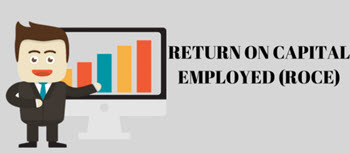‘Return on capital employed’, also known as ROCE, is a very common ratio used to measure the profitability of a company – essentially, how much profit a company can make from its capital employed. This can be worked out by comparing the capital employed to the net operating profit. This is important for potential investors to look at when they are thinking about investing in a company, because it reveals not only how profitable a company is but also how efficiently the company employs its capital.
Long-Term Advantage
 Return on capital employed is something to look with a long-term view – because it shows the performance of assets whilst also considering the long-term financial prospects of a company. Although better-known and more widely used by potential investors, return on equity (ROE) is unable to do this. To that end, ROCE is more useful than ROE when it comes to assessing the long-term investment potential of a company.
Return on capital employed is something to look with a long-term view – because it shows the performance of assets whilst also considering the long-term financial prospects of a company. Although better-known and more widely used by potential investors, return on equity (ROE) is unable to do this. To that end, ROCE is more useful than ROE when it comes to assessing the long-term investment potential of a company.
The Calculation
As previously stated, the net operating profit and the capital employed are pivotal to calculating the return on capital employed. The net operating profit of a company is often known by its acronym, EBIT -earnings before interest and tax. This shows how much profit the company has made from operations.
‘Capital employed’ can actually refer to several different things within the world of finance. For instance, it can refer to the company’s total assets minus all of its current liabilities. Also, it can refer to the equity of a company’s stockholders minus its long-term liabilities. However, the actual figure reached is the same. Capital employed can be used as a good indicator of what resources a company has.
The formula, as with return on equity, is quite simple to remember: it is earning before interest and tax divided by capital employed. It is expressed as a percentage.
So, for example, if a company has earnings and interest before tax of €2million, and a total capital employed of €10million, the return on capital employed will be 20%:
2/10 = 0.2
This would be considered as good by most potential investors: the higher the percentage, the better it is. This is because quite simply, the higher the return on capital employed, the higher the profitability of the company.
It would be wise to compare the current return on capital employed of a company with the last few years at least, to see if there is a trend of it falling or rising. Obviously, if the trend is for the return on capital employed to be rising, then this a good sign that the company is financially healthy and quite possibly a good investment opportunity (although there are of course many other variants to also take into consideration when you’re looking to invest in a company).
If a company’s return on capital employed isn’t looking great, there are some things they can do try to improve it, such as reducing the value of capital employed whilst sustaining an operating profit and increasing an operating profit whilst not increasing the capital employed.
This article was last updated on: January 28, 2018
